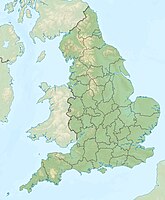
Photo from wikipedia
Knowledge of the stability limit and critical point of the H2–CO2–CH4–CO–H2O system is significant for the management and optimization of the gasification systems of organic substances in supercritical water. We… Click to show full abstract
Knowledge of the stability limit and critical point of the H2–CO2–CH4–CO–H2O system is significant for the management and optimization of the gasification systems of organic substances in supercritical water. We report thermodynamic calculations of the stability limits and critical points of the H2–CO2–CH4–CO–H2O system based on the cubic equation of state. Prior to the calculations of the quinary system, phase equilibria of the H2–CO2 and CH4–C2H6 systems and critical points of the CO2–H2O system were calculated and compared with experimental data. The calculated temperature stability limit decreased as the mole fraction of H2 in the quinary system increased. The calculated critical point of the (0.50 H2 + 0.01 CO2 + 0.02 CH4 + 0.02 CO + 0.45 H2O) mixture (in mole fractions) was at about 610 K and 300 MPa. The increase in the mole fraction of CO2 or H2O and the corresponding decrease of the mole fraction of H2 in the quinary system would make the critical temperature and pressure change significantly. The calculations indicated that all the p–T states of the quinary system in our previous work were stable.
Journal Title: International Journal of Thermophysics
Year Published: 2020
Link to full text (if available)
Share on Social Media: Sign Up to like & get
recommendations!